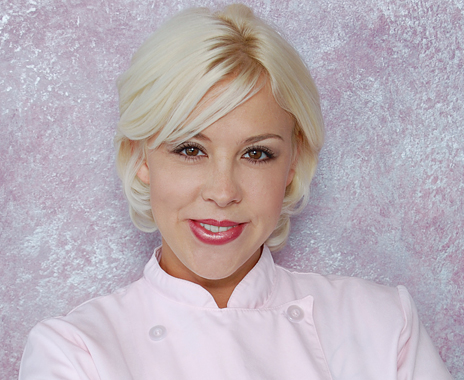Food Network celebrity chef Emily Ellyn has appeared on “Cupcake Wars” and “Cutthroat Kitchen,” and is now working on her first cookbook while also pursuing a Ph.D. (she already has two master’s degrees). Ambitious and focused, Ellyn relishes remaking classic recipes, which includes using healthier ingredients whenever possible. Ellyn talks with QSR about experimenting with a relatively new, healthier fat: high-oleic soybean oil.
When did you first find out about high-oleic soybean oil?
Being in the industry, I talk with a lot of chefs and folks in foodservice. Everyone is looking for that nutritious replacement for partially hydrogenated oils with trans fats. When high-oleic soybean oil came on the scene, it started coming up in conversation, and it caught my attention. Studies keep showing that consumers are concerned with the nutritional content of the food they eat. When we learned that partially hydrogenated oil with trans fats was bad and that it was connected to elevated LDL cholesterol, it just made sense for anyone in the foodservice industry to start looking at healthier alternatives.
What’s it like to work with?
I worked with friends at [Atlanta’s] Sublime Doughnuts, helping them franchise their business and working a lot in the kitchen. I wish we’d had high-oleic soybean oil back then. When you get to work with it, to feel it, it’s silky. It doesn’t gunk up your equipment. It’s just a really clean oil.
What about the oil’s taste?
When you cook with it, it allows the natural flavors of the dish to shine because it has a neutral flavor. From a restaurant perspective, your customers get the flavors and textures they expect in the dishes they’re ordering. For foodservice in particular, there are usually a lot of fried foods. This will actually extend the fry life and, for packaged food, it will extend the shelf life. You’ll see tortillas, fries, and foods that are going to be fried or packaged and cooked in quick service have an extended and more consistent product life. It’s going to stay fresh longer. Probably the most prevalent application that we’re going to see it in sooner rather than later is packaged foods, like buns or baked goods.
What kinds of misperceptions are there around fats?
I think the biggest misperception among consumers is that all fat is bad and leads to obesity. The truth is that many fats are beneficial and vital to our mind and body health. With zero grams of trans fats and low levels of saturated fat, high-oleic soybean oil replaces those bad fats and gives you those omega 3s. From a chef’s perspective, often when you sub a healthier option, you’re sacrificing taste. I think when chefs try the high-oleic soybean oil, they’ll see it’s healthier and giving them all the benefits. Fats add flavor.
What are some innovative ways restaurants can use these oils?
I think the oil itself is the innovation, with the excellent flavor and texture, the frying, the heat stability it has. You can get this oil up to 465 F, and it lasts two to three times longer [than other oils]. Ultimately, there’s going to be lower maintenance costs on your equipment and just the initial product. It provides the opportunity to blend with other fats, so you’re further optimizing your costs by increasing its functionality.
Are there challenges related to using this oil?
The biggest challenge will be that soybean growers need to meet the demand. It’s projected to be America’s fourth largest row crop in acreage by 2023.
Is it more expensive than other oils?
Right now, because it’s not in as much demand, it is more expensive. But it is available, so we can start purchasing it. As we purchase it, and the farmers continue to plant the acreage, it’s going to become more affordable. I got to talk to a farming network about it, too. It’s produced right here in the U.S. by American farmers. By 2024, we’ll have 9.3 billion pounds of high-oleic soybean oil available.
Does it work better on some platforms?
It’s ideal for high-yield frying and sautéing. You can use it on griddle tops. It’s great for baked goods. Speaking of baked goods and being a cupcake warrior, I’ve just developed a funnel cake cupcake that uses soybean oil in each component. It’s going to have commodity oil in the batter, soy shortening for the frosting, and then I’m going to use high-oleic soybean oil to fry the funnel cake garnish.












